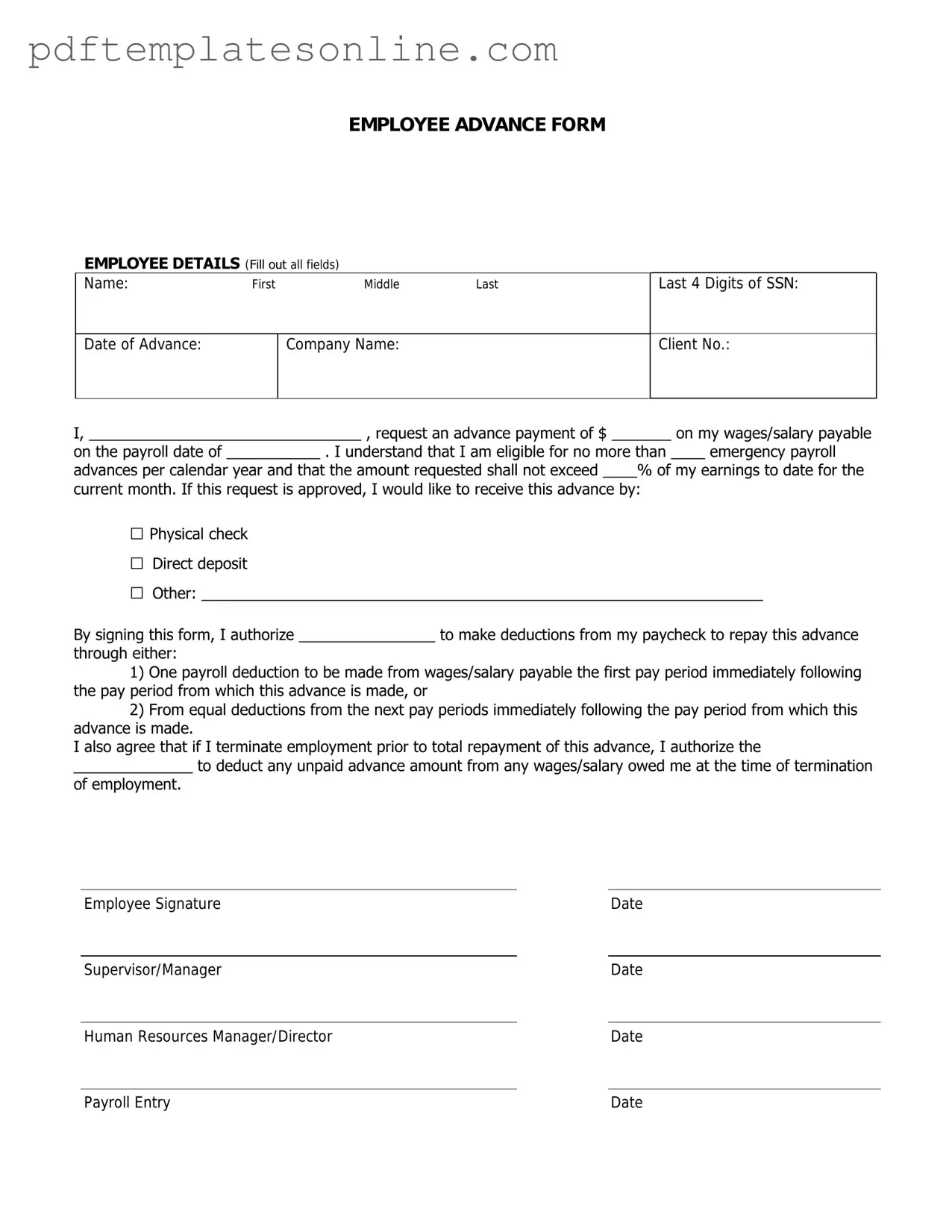Detailed Guide for Writing Employee Advance
Once you have the Employee Advance form in front of you, it’s time to start filling it out. Completing this form accurately is essential for ensuring that your request is processed smoothly. Follow the steps outlined below to provide all necessary information clearly and concisely.
- Begin by entering your full name at the top of the form.
- Next, fill in your employee ID number or any identification number assigned to you by the company.
- In the designated section, indicate your department or team name.
- Provide the date on which you are submitting the form.
- Clearly state the amount requested for the advance.
- In the next section, briefly describe the reason for the advance. Be specific but concise.
- Sign and date the form at the bottom to confirm that all information is accurate and complete.
After you have filled out the form, ensure that you keep a copy for your records before submitting it to the appropriate department for processing. This will help you track your request and provide a reference if needed.
